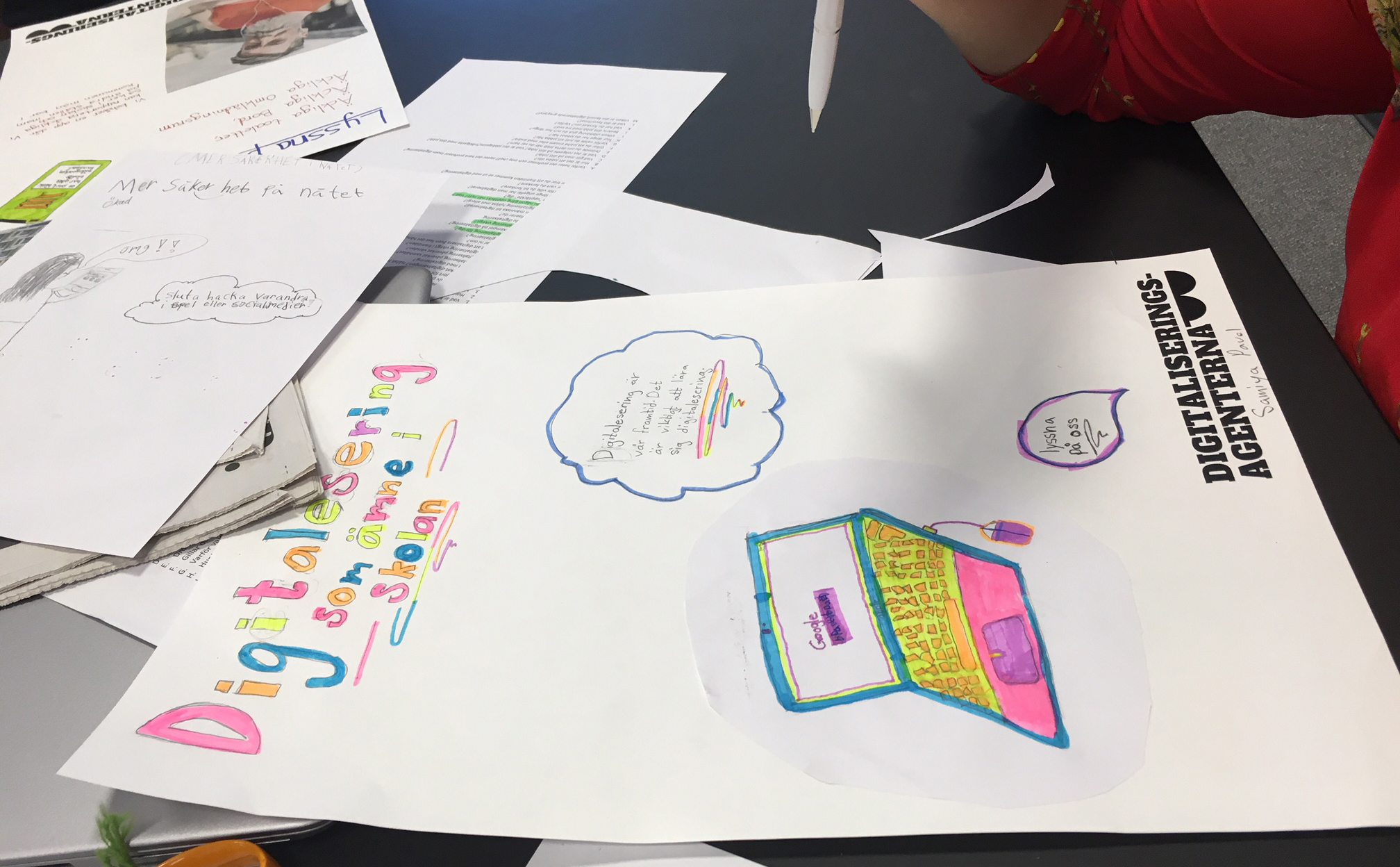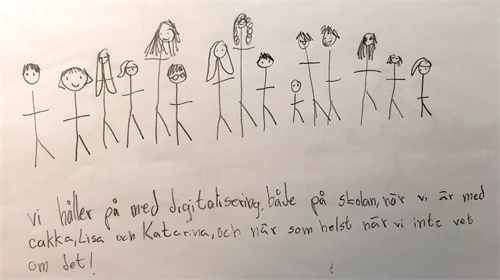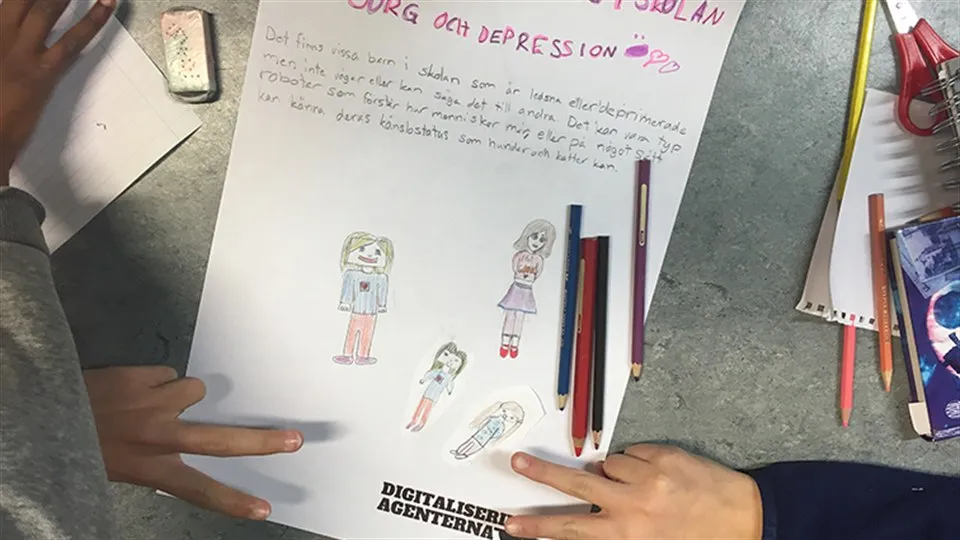Children lead the way in digitalisation | 2018 |
"I need your help," asked the woman who went into class 5a at Höglundaskolan in Sundsvall last spring. And the children helped. They drew and wrote and explained and thus helped her figure out what digitalisation is. And how we ourselves can act to avoid allowing ourselves to be "digitized".
The woman who entered the classroom is Katarina Lindblad Gidlund, professor of informatics and one of the country's leading researchers in digitalisation. And the reason why she sought out the 11-year-olds in class 5 A was that, within the framework of the project Digitalisation Agents, she wanted to investigate what "co-creation", or co-creation, in these times of digitalisation really looks like.
Because some of the biggest challenges with digitalization are that, firstly – the average person does not really understand what it means, and secondly – people in general do not participate in the development. Instead, they allow themselves to be digitized, so to speak, in passive form.
"We often talk about it being 'digitized', as if it is an invisible force, but that is not true. It is the person behind the machine who decides. And we citizens must take power," says Caroline Wallmark, project manager.
Together with Lisa Sällvin, she will sift out a working material from the research project for the schools. The latest curriculum states that digitalisation knowledge should be included in teaching, and then it is good if the teachers have a little grasp of the concept. Many people are not fully familiar with what it stands for, especially not when it comes to the point that deals with social change, says Caroline Wallmark.
What we don't think about are the softer values, where we have to ask questions about why, and who gets to be involved in deciding
"It's not as concrete as, for example, programming and self-criticism, it's a little harder to get a grip on. We often see digitalization as something that has to do with computers, phones and the hardware itself, but what we don't think about are the softer values, where we have to ask questions about why. And who gets to be involved in deciding what is to be digitized," she says.

The name itself, Digitalisation Agents, brings to mind something exciting, something to be explored and perhaps revealed. There is something of Lasse Maja's detective agency about it all, and that's how it should be. The material resulting from the project will primarily be used by middle school students, although students of older ages will certainly also benefit from it," says Caroline Wallmark.
"To map the children's knowledge of digitalisation, they had to work with the concept itself in several lessons, without being told what it meant. We started by asking them to draw digitalization. They also had to take home the task and ask an adult at home to draw. Then they got to work with digitalisation in relation to different themes, such as housing, travel and transport, work, family and friends, healthcare, who is in charge and how to learn. It wasn't until the fourth lesson, out of five, that we told them what it is. It was very interesting to work in this way because it gave us a good starting point for producing working material for the schools," says Caroline Wallmark.
Since an important part of digitalization is to realize that we as citizens can actually be co-creative, it is important to encourage children to be both critical and creative, and that they understand that they have the right to be so.
"The project has several purposes, but one of them is for the children to think creatively and that we want to stimulate them to become engaged and co-creative members of society," says Caroline Wallmark.

The collaboration with class 5a has led to an exhibition that is currently on display at the Municipal Hall in Sundsvall, where the children's ideas about digitalisation and what it can be used for are displayed. In collaboration with researchers at Mid Sweden University, the children have also been able to develop a soft robot called Diggibot, which with their different voices tells what they want with digitalisation. It was given to the new authority DIGG as a gift when they installed themselves. Next in line in the project is to refine the material itself by collaborating with two more middle school classes and to make films so that schools elsewhere in the country can also take part in it.
"We want it to be accessible to everyone," says Caroline Wallmark.
